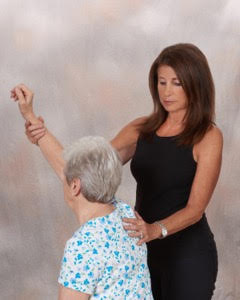Chemotherapy can have an enormous impact on the cancer survivor’s body and mind because of the side effects. After chemotherapy, cancer patients usually need to learn how to regain strength, and improve balance, posture, and flexibility. These fitness goals are realistic and worth working towards.
Reasons for regaining fitness after chemo
- Decrease stress, depression, and anxiety
- Decrease muscle and joint pain and stiffness
- Increase range of motion
- Weight control

Everyone has different pre-cancer fitness levels, exercise experience, co-morbidities and different reactions to the treatments. It is important to understand what the chemo can do to the body. It may affect balance, a patient’s immune system, and cause nausea, light-headedness, vertigo, neuropathy, fatigue, sarcopenia (loss of muscle mass), and anemia.
Chemotherapy Side Effects and Programming
Understanding the issues and modifications needed in order to teach your clients how to exercise safely helps you know what to be mindful of and when to decrease exercise frequency and intensity.
Immune System
If your client is receiving or recently completed chemotherapy, his immune system will be weakened. A cancer survivor needs to stay away from crowded places and places that are not cleaned regularly so to avoid infections. Keep this in mind as you make programing plans.
Fatigue
Cancer-related fatigue is the type of fatigue that does not leave even after resting. It may deter your client from embarking on an exercise program. If he feels lethargic, decrease the intensity of the exercise.
The following tips can help your client overcome and exercise safely even when fatigued:
- Try to walk, even around the house.
- Perform breathing, stretching, and balance exercises on the high fatigue days.
- Exercise with a friend. A buddy can help motivate you.
- Listen to music.
- Break up your exercise session into smaller sessions.
- Schedule sessions when you have the most energy.
- Change your exercise routine so that you do not get bored.
- Keep a journal.
- Understand your limitations by listening to your body.
- Progress at your own pace.
- Use common sense, know when to rest.
- Exercise to tolerance.
- Stay hydrated by drinking before, during and after exercise.
Neuropathy
This common side effect of cancer treatment affects the nervous system. Chemotherapy may damage the nerves in the arms or legs. When the neuropathy is in the hands or feet it is called ‘peripheral neuropathy’. This causes numbness, loss of sensation, tingling and pain. If the hands are affected, it may be difficult to safely hold on to hand weights. Using tubing or resistance bands with handles is safer.
Balance training is advised for peripheral neuropathy affecting the toes and feet. Balance might be affected because of the loss of feeling in the feet. You will need to modify the exercises so that your client does not fall. He should not perform exercises that require a high level of balance.
Bone marrow activity
Red and white blood cells and platelets are produced in the bone marrow. Treatment may cause you to have fewer platelets, so your client might bruise or bleed easily. Use caution with machines and equipment.
Neutropenia
This decrease in white blood cells may develop. A decrease in white blood cells can increase the risk of infection. Anemia can develop, which is a decrease in red blood cells. This will cause fatigue. Adapt the exercises to suit your client’s energy level.
Osteoporosis
Osteoporosis, a decrease in bone density, is a common side effect of treatments. Safe osteoporosis exercise guidelines must be followed. When cancer cells are lodged in the bone, there is a high risk of breaking a bone. Swimming and riding a stationary bike are safe exercises. Perform balance exercises and exercises that have a low risk of falling.
Heart side effects
An exercise program for someone who has weak heart muscles or an irregular heartbeat should begin under supervision. Your client’s heart rate, blood pressure and breathing will need to be monitored. Medical clearance is necessary. Be conservative and exercise at low intensities.
Lymphedema
This is a swelling of the limb or trunk. It is a common side effect that can occur after the removal of lymph nodes. If your client is at risk for lymphedema, it is wise to be evaluated by a lymphedema specialist before beginning an exercise program. Exercise is encouraged with lymphedema, but it is recommended to use a compression garment. Maintaining range of motion and avoiding infection are important. Start slowly and improve slowly. If you notice swelling, the doctor should be notified.
Progress slowly after chemo

Do you have questions about this topic? Come ask Carol, our Cancer Fitness Specialist!


